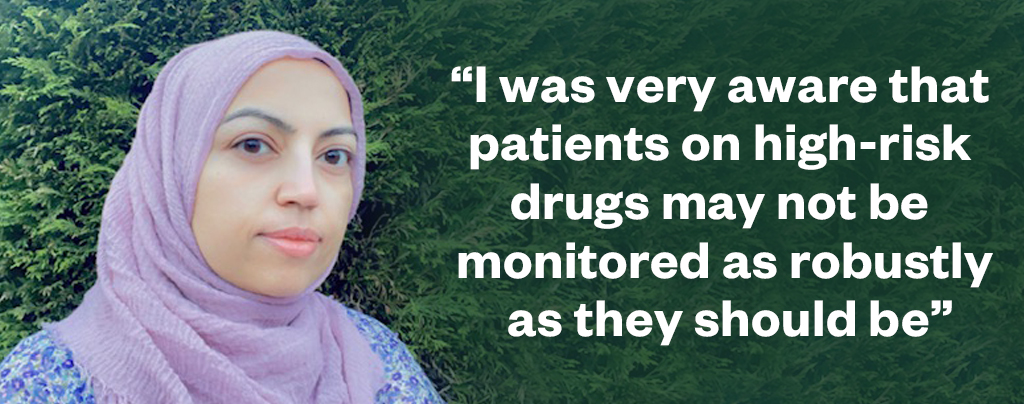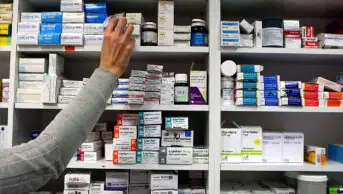
Mclean / Shutterstock.com
As the lead on medicines management at Beacon GP Care, I work across eight practices in Manchester, making sure that medicines are being prescribed safely and effectively.
Over the past four years, this has involved designing and implementing a medicines alert system at each site to identify patients on high-risk drugs who had not received the necessary monitoring from their GP.
While it is important to prescribe every drug with diligence, high-risk drugs are frequently linked to adverse events, or even fatalities, if not prescribed and monitored properly. The decision to get started on the auditing system was purely to avoid these scenarios and improve patient safety at the practices.

After having spent more than 15 years in community pharmacy and one year in medicines management for NHS Heywood, Middleton and Rochdale Clinical Commissioning Group, I was very aware that patients on high-risk drugs may not be monitored as robustly as they should be in GP practices.
This led to the idea of using visual safety alerts to remind prescribers to carry out the recommended monitoring for all high-risk drugs.
Since 2019, prescribers have seen an alert on screen asking them to provide any missing data required for monitoring, when prescribing from a list of high-risk drugs. If prescribers do not take action to fill in the missing information — by arranging a blood test, for example — they are even asked to provide a written reason as to why they are proceeding with the prescription. This is then saved within the patient’s consultation notes.
These alerts are triggered for patients prescribed disease modifying antirheumatic drugs, lithium, amiodarone, novel oral anticoagulants, warfarin, controlled drugs in schedules 2 and 3, and hypnotics, such as benzodiazepines and Z-drugs.
For example, through the system, prescribers are now asked to record alcohol consumption, smoking status and body mass index for patients prescribed lithium; a patient’s weight for apixaban prescriptions; and a patient’s dependency status for those taking controlled drugs and hypnotics.
While most of the high-risk medicines have their own monitoring requirements, we recognised that this is not the case for patients on opioids, hypnotics or Z-drugs, and identified this as an area of concern for patient safety. As neither controlled drugs nor hypnotics require a regular blood test for monitoring, we have found that the initiation of these drugs can be the start of a long road with no return for many of our patients.
So, we developed our own requirements to include in the alert. Now, if a patient has received a schedule 2 or 3 controlled drug in the past eight weeks or a hypnotic or Z-drug in the past four weeks, the prescriber’s IT system will automatically display a template for them to fill in.
This will include the name of the drug being discussed and its indication; the patient’s status of dependency by selecting either ‘not dependent’, ‘likely to be dependent’ or ‘already dependent’; an acknowledgement that a treatment plan has been agreed and the dose has been discussed; and a date for the next review.
Of course, there were challenges in implementing the alert system, with prescribers raising user friendliness as an issue. Our practice team discussed this at clinical meetings and modified the original template gradually to its current form.
The current version now pre-checks each patient for all high-risk drugs, then checks blood tests and other details, such as patients with lower estimated glomerular filtration rate and those on non-vitamin K antagonist oral anticoagulants, who will require more frequent monitoring. It then displays a warning to the clinician when they add a new consultation, alerting them that this patient is missing essential monitoring for a certain drug.
Overall, the alert system has yielded excellent results, increasing medication reviews for high-risk drugs by up to 57 percentage points within the first year (see Table). In addition to providing standardisation of practice, it has created a safety net for prescribers. Most importantly, patients are receiving timely care and early identification for referral to secondary care, should the need arise.
This system proved to be so useful that we have since designed several other structured consultation tools for acne and identifying red flags in minor ailments.
| Drug name | Percentage of patients who had received a medication review in October 2018 | Percentage of patients who had received a medication review in October 2019 |
|---|---|---|
| Pregabalin | 24% | 81% |
| Gabapentin | 57% | 87% |
| Buprenorphine | 47% | 88% |
Aneela Tehseen is clinical pharmacist for medicine management and pathways at Beacon GP Care
1 comment
You must be logged in to post a comment.



Well done Aneela